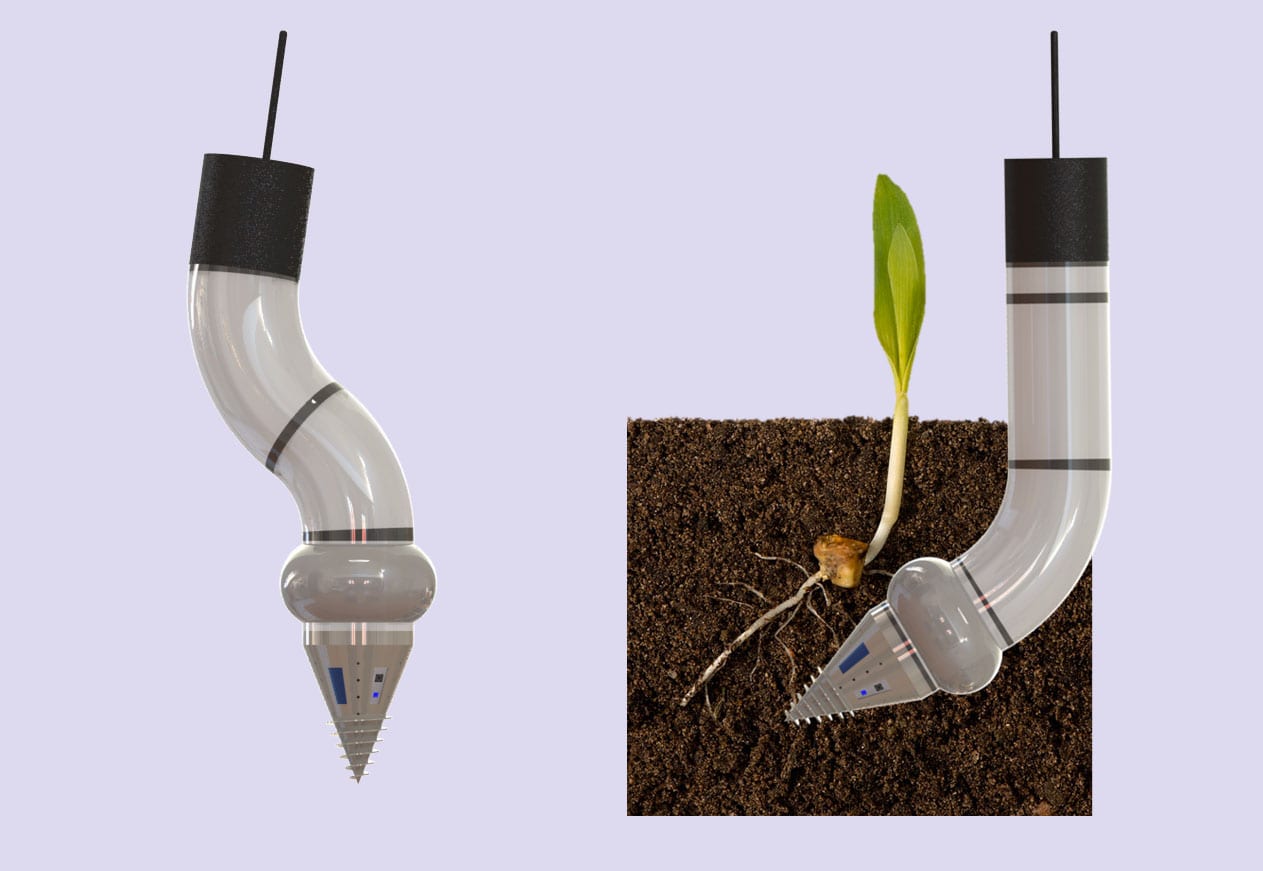Crop scientists over the years have learned a great deal about how plants grow above the ground, but much less is known about roots and their soil interactions. Now, a Cornell project funded by two separate three-year grants will develop worm-like, soil-swimming robots to sense and record soil properties, water, the soil microbiome and how roots grow.
A $2 million National Science Foundation (NSF) grant led by principal investigator (PI) Taryn Bauerle, an associate professor in the Horticulture Section of the School of Integrative Plant Science (SIPS) in the College of Agriculture and Life Sciences, will focus on the plants and soil perspective.

Meanwhile, a $750,000 NSF National Robotics Initiative grant to PI Robert Shepherd, associate professor in the Sibley School of Mechanical and Aerospace Engineering in the College of Engineering, will develop the soil-monitoring robots.
The project will focus on maize, with the ultimate goal of incorporating factors related to root growth to improve breeding efforts and soil management that directly affect food productivity and security.
“We plan on developing new tools so that we can tap into the below-ground environment of plants and soil in a way that allows us to shine light in a black box of plant and soil interactions,” Bauerle said.
“This is really the next frontier in plant biology,” said project co-PI Michael Gore, Liberty Hyde Bailey professor and professor of molecular breeding and genetics in the Plant Breeding and Genetics Section of SIPS. By quantifying below-ground characteristics, the researchers may then identify relationships with above ground characteristics, Gore said.
To acquire those measurements, the team will develop 1- to 2-foot worm-like robots that emulate how a bore drills into the ground, combined with a peristaltic motion that mimics how worms move through soil.
“The front loosens up the dirt and the back pushes forward and presses that dirt into a wall of a tunnel,” Shepherd said. They plan for one robot to collect continuous data up and down an entire row of maize.
The team will experiment with a number of sensors and strategies. A robot’s ability to push through soil can reveal such properties as soil density and compactness. Robots will also be fitted with small temperature and humidity sensors.
Fiber optic cables could provide a slew of measurements, including direct imaging of roots to measure growth and angles. The team plans to employ “AquaDust” developed in the lab of project co-PI Abraham Stroock, the Gordon L. Dibble ’50 Professor in the Smith School of Chemical and Biomolecular Engineering in the College of Engineering. AquaDust fluoresces in different wavelengths based on the amount of water in the soil.
Fiber optics could also allow measurements of excitation and emission wavelengths of soil microorganisms and root chemistries, including carbon compounds exuded by plant roots. “We should be able to determine roughly what chemicals and organisms are prevalent at the root surface and surrounding soil,” Shepherd said.
By quantifying root features, soil properties, compounds, microorganisms and water, the researchers may then use predictive models to combine the below- and above-ground characteristics to predict such things as grain yield and stress tolerance, Gore said.
Another goal of the project will be to evaluate how plants might respond to effects of climate change, such as water availability. Measurements of root growth, factored in with environmental data, can provide insights into how roots grow based on external conditions, such as droughts.
Since soil is not a good medium for wireless transmission, the researchers will test prototypes that record data in memory, to be retrieved later. They may also be able to experiment with acoustic communication through soil and wires that run along a row of corn plants. At the end of the project, the researchers hope to showcase live demonstrations of prototypes in a cornfield.
Preliminary work was made possible by seed funding from a Cornell Initiative for Digital Agriculture grant.


